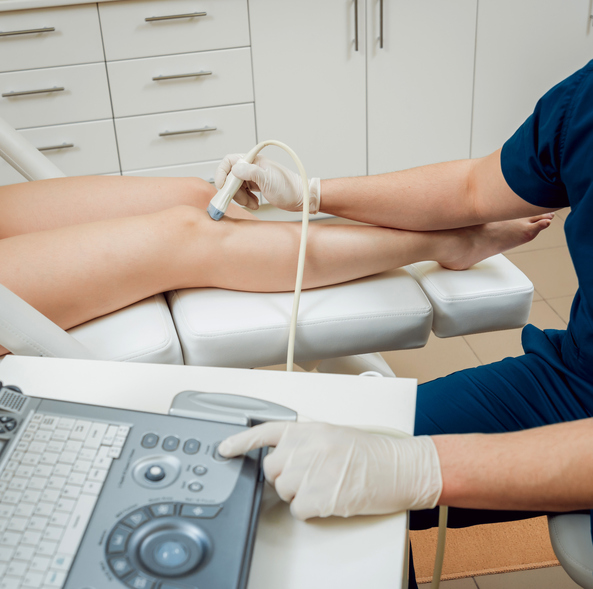As everyone knows, and certainly those who are involved with ultrasound and its education, there is a well-documented challenge in ensuring enough sonographers join the ultrasound workforce.
This was the starting point for a discussion in February 2014, when Health Education England West Midlands called ultrasound service leads, sonographers, radiologists and ultrasound education teams together to really talk about how the ultrasound staffing crisis was going to be solved.
It seemed there was a need to enable a new group of people to join the ultrasound workforce because it was highlighted that the majority of those entering ultrasound come from other shortage professions (such as diagnostic radiography and midwifery).
There were also diagnostic radiographers who wanted to be sonographers but who were not able to get a training place. From an education viewpoint, students were entering diagnostic radiography courses who did not ever want to be a diagnostic radiographer; they wanted to be a sonographer.
The discussions were challenging and far reaching, and considered the impact of the lack of professional registration for sonographers, as well as the core workload within many ultrasound services. At the end of nearly two years of discussion between 14 employers, university staff and Health Education England West Midlands, the direct entry BSc (Hons) Medical Ultrasound programme, followed by a preceptorship post-graduate certificate, was determined as the model to take forward by the region.
It is testament to the vision of that team of clinical sonographers that they could see the possibilities in supporting the innovative development of an undergraduate direct entry course. As a consequence, the Birmingham City University direct entry undergraduate course is now in its third year of delivery, with 17 students enrolled across two cohorts.
This development has challenged the notion of only allowing post-graduate entry routes into medical ultrasound, particularly given the current lack of a regulated register (though acknowledging the Public Voluntary Register of Sonographers, held by the Society and College of Radiographers) and we have been involved in many discussions on the positives and challenges of the development.
Although ‘sonographer’ is not currently a protected title, our course is fully mapped to and aligns with the Health and Care Professions Council (HCPC) Standards for Education and Training (2017) and their Guidance on Conduct and Ethics for Students (2016).
Direct entry means that students apply to the ultrasound course with no prior healthcare skills expected; our entry criteria are the same as for diagnostic radiography and therapeutic radiography BSc (Hons) qualifications. Similar to all other healthcare profession courses, students entering the BSc Hons Medical Ultrasound also pay course fees. Applications are through UCAS (the Universities and Colleges Admissions Service) with the selection process including a written test, a hand-eye coordination skills test using one of our ultrasound scanners with a phantom, as well as an interview with both an academic and a clinical sonographer.
Current students come from diverse backgrounds, many already with higher levels of education and life experience, such as healthcare, the military and engineering. Only a very small number have come directly from school or college.
Initially, our undergraduate programme was supported by six clinical placement sites across the West Midlands. This has now increased to 12 departments across the country. Students spend 50% of their three year course in clinical practice, the majority of which is with sonographers, but also requires experience of other imaging modalities and time with midwives.
Students undertaking our course, study gynaecological, obstetric and abdominal ultrasound, and at qualification are expected to be able to provide a written report on their findings; skills for which are taught in university, experienced in the clinical department and practiced within the university skills and simulation facilities.
In the year following graduation from their BSc (Hons) Medical Ultrasound qualification, the graduates are then expected to undertake their preceptorship period, which is supported through a post-graduate certificate encompassing preceptorship sign off and leadership, plus learning and teaching to enable them to move towards higher levels of practice and independent ‘actionable’ reporting. Our belief is that this formalised preceptorship period is critical for development of confidence and, whilst the newly qualified sonographers will be competent, to further refine and develop their skills in clinical practice in a supported way.
We recognise that there is a huge demand for clinical training places and that student education impacts on the departmental workload. It is all credit to our supporting clinical departments that they are so committed to providing high quality education and training places to our undergraduate students. The students are making excellent progress and benefitting greatly from full time education at the university and the high standard of education and support they are receiving in the clinical departments.
That said, there is a continuous need for further clinical placements as we recruit new students and to release pressure on existing placement providers.
The current postgraduate ultrasound education model will remain a core way to educate sonographers. It is extremely successful and offers progression opportunities for many healthcare professionals, as well as development into specialist areas of ultrasound practice such as paediatrics, musculoskeletal (MSK) or vascular ultrasound. Our offer to the development of the ultrasound workforce is to provide opportunity for those who want to be sonographers as their first profession and through their first degree, to be able to do so.
Our first student has just been offered a job for when they qualify and has also been offered support through their preceptorship year. This is an accolade to the clinical team who have been educating her as well as highlighting that, as a model for ultrasound education, a direct entry undergraduate qualification can develop employable, competent and caring sonographers.
